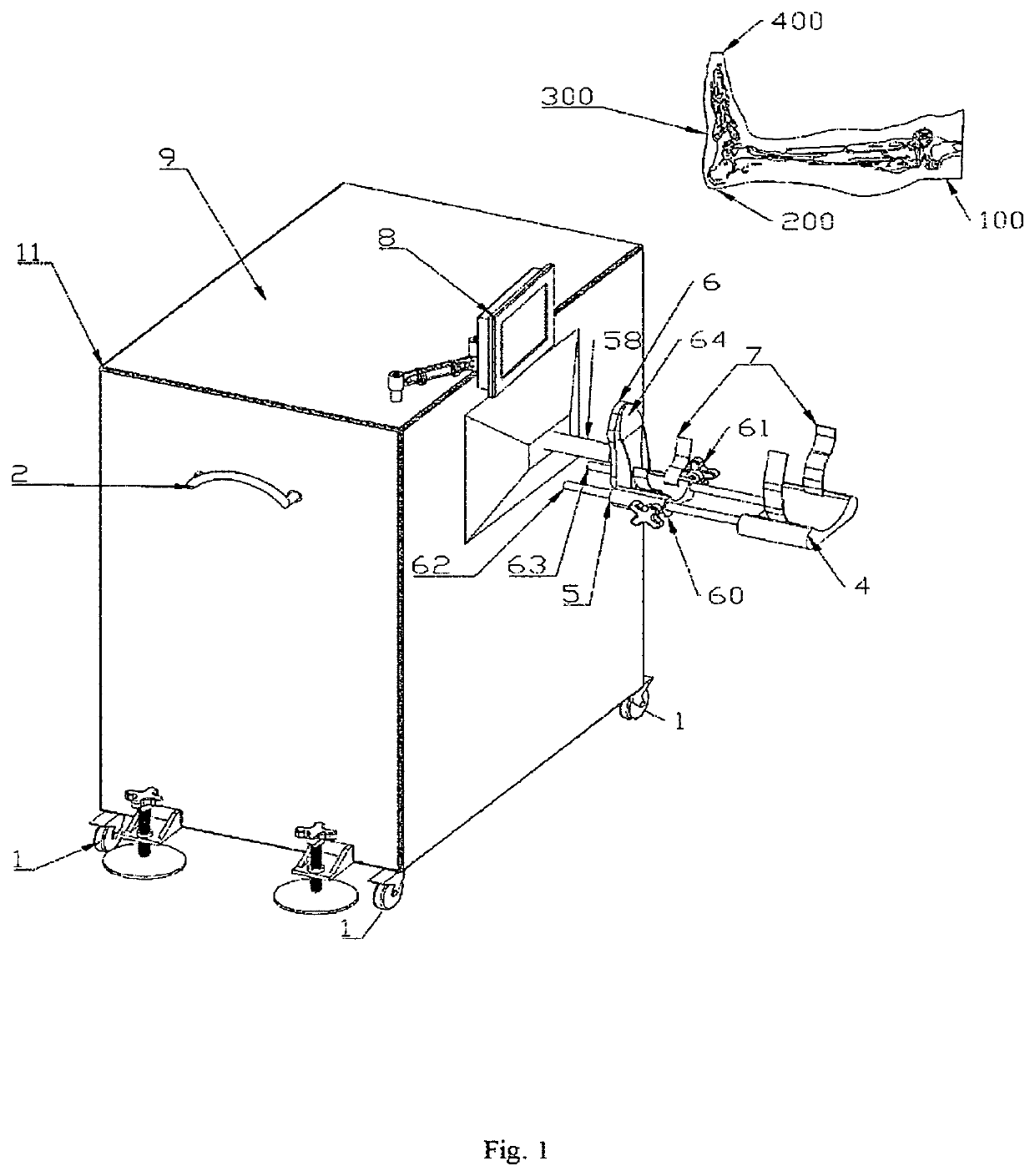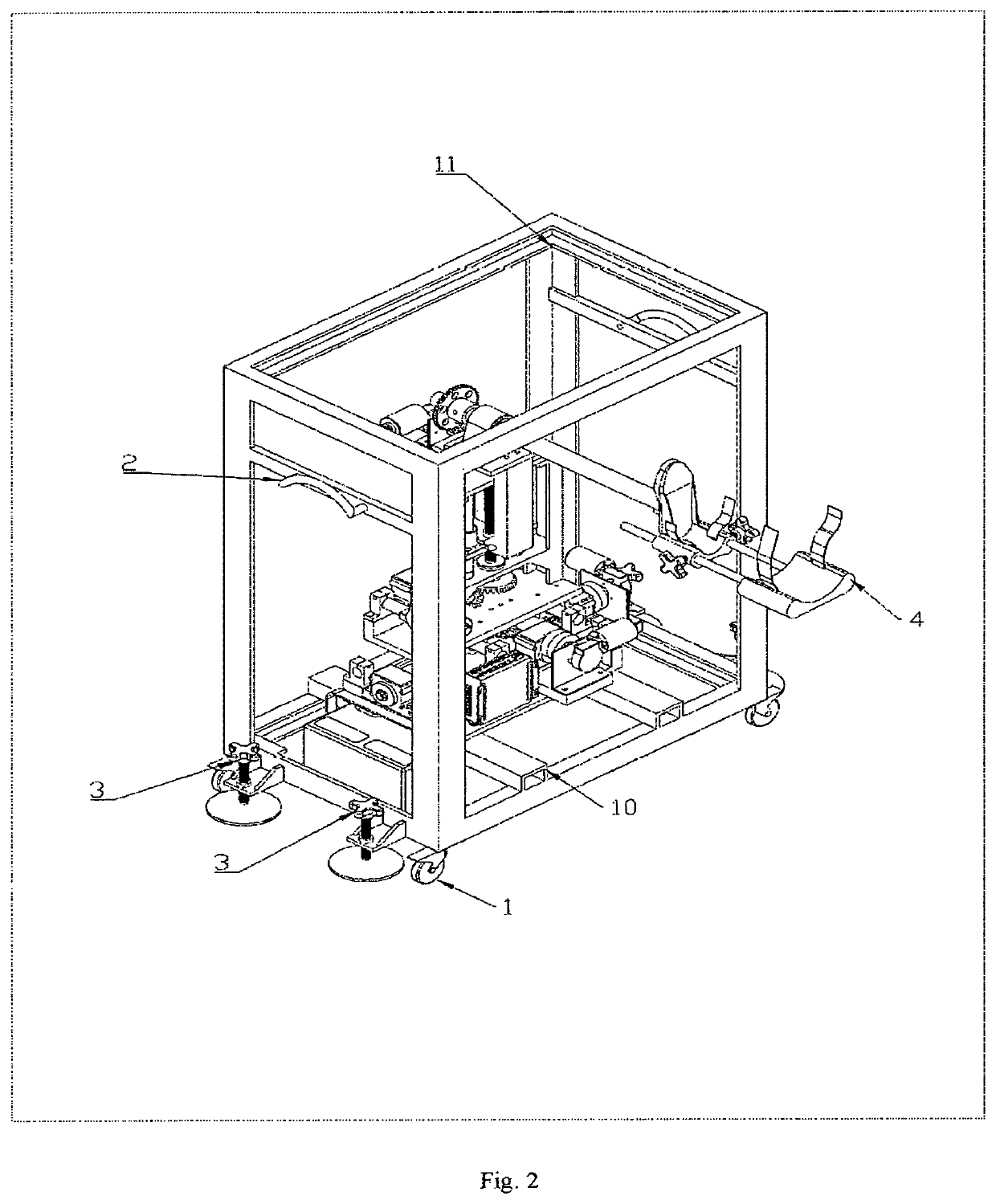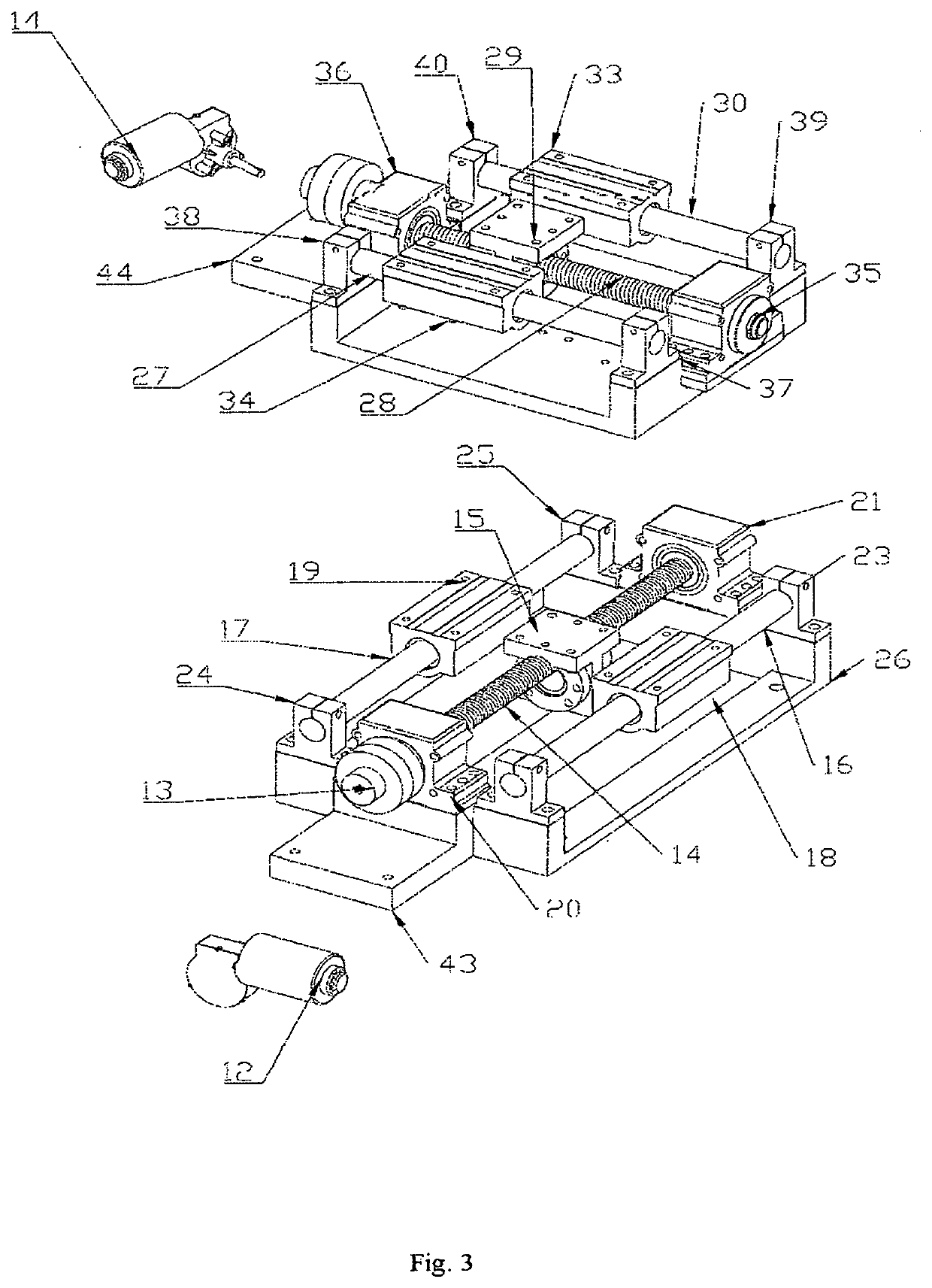Traction provider robot for patient's fractured foot in surgical operation
a technology of a traction provider and a patient's foot, which is applied in the field of operating room equipment, can solve the problems of patient's foot and bone damage, difficult operation of the bone in the desired position, and the damage to their vertebral column and wrist, so as to facilitate the performance of the surgical team and improve quality
- Summary
- Abstract
- Description
- Claims
- Application Information
AI Technical Summary
Benefits of technology
Problems solved by technology
Method used
Image
Examples
Embodiment Construction
[0016]FIG. 1 shows three-dimensional view of invented robot (70). It can be carried to subjected place nearby operating table by its four wheels with lock (1) and handle (2) and is fixed on the ground by its four adjustable bases (3). The robot (70) is ready to use in this situation.
[0017]To use of the robot (70), shin (100) of patient is located on section / shin holder (4) and his / her ankle (200) on section / ankle holder (5) in such a way that the sole (300) is settled on section / sole holder (6). The next step is to secure patients' foot toward the robot (70) by ankle and shank fixator straps (7). The operator commands the robot (70) to arrange its proper situation for applying necessary traction to patient's foot by application of a finger touch screen (8) (or a remote control) which is located on top portion of case (9). By touch screen (8) all three linear and one rotational degrees of freedom for displacement of patient's foot is controllable. The desired traction is provided by ...
PUM
 Login to View More
Login to View More Abstract
Description
Claims
Application Information
 Login to View More
Login to View More - R&D
- Intellectual Property
- Life Sciences
- Materials
- Tech Scout
- Unparalleled Data Quality
- Higher Quality Content
- 60% Fewer Hallucinations
Browse by: Latest US Patents, China's latest patents, Technical Efficacy Thesaurus, Application Domain, Technology Topic, Popular Technical Reports.
© 2025 PatSnap. All rights reserved.Legal|Privacy policy|Modern Slavery Act Transparency Statement|Sitemap|About US| Contact US: help@patsnap.com



